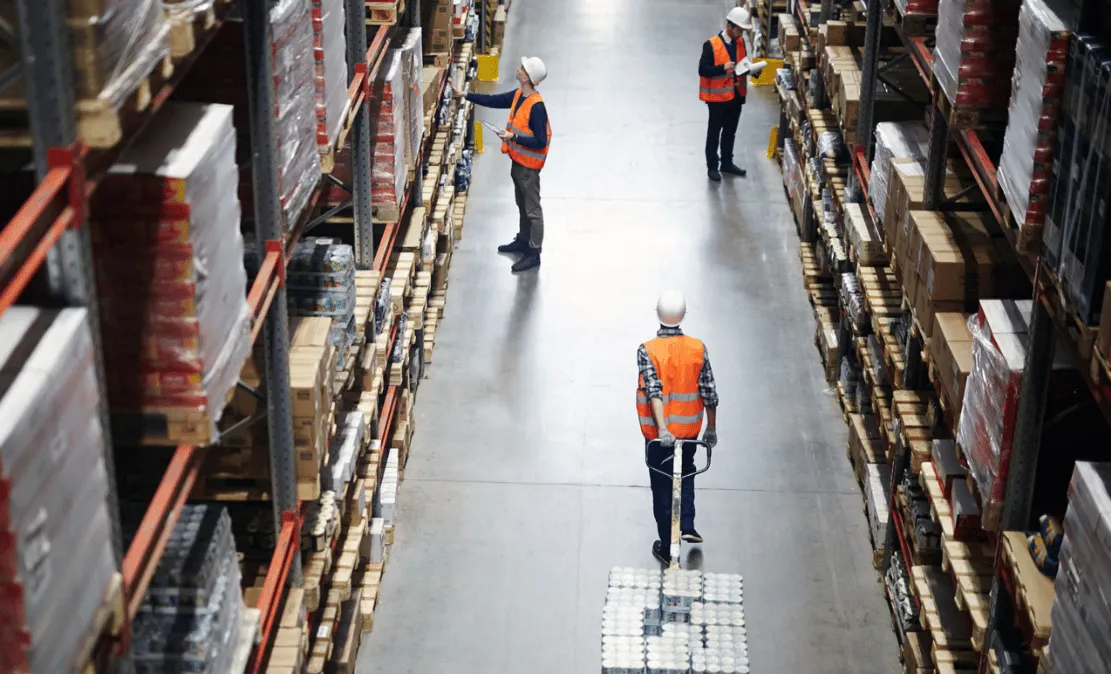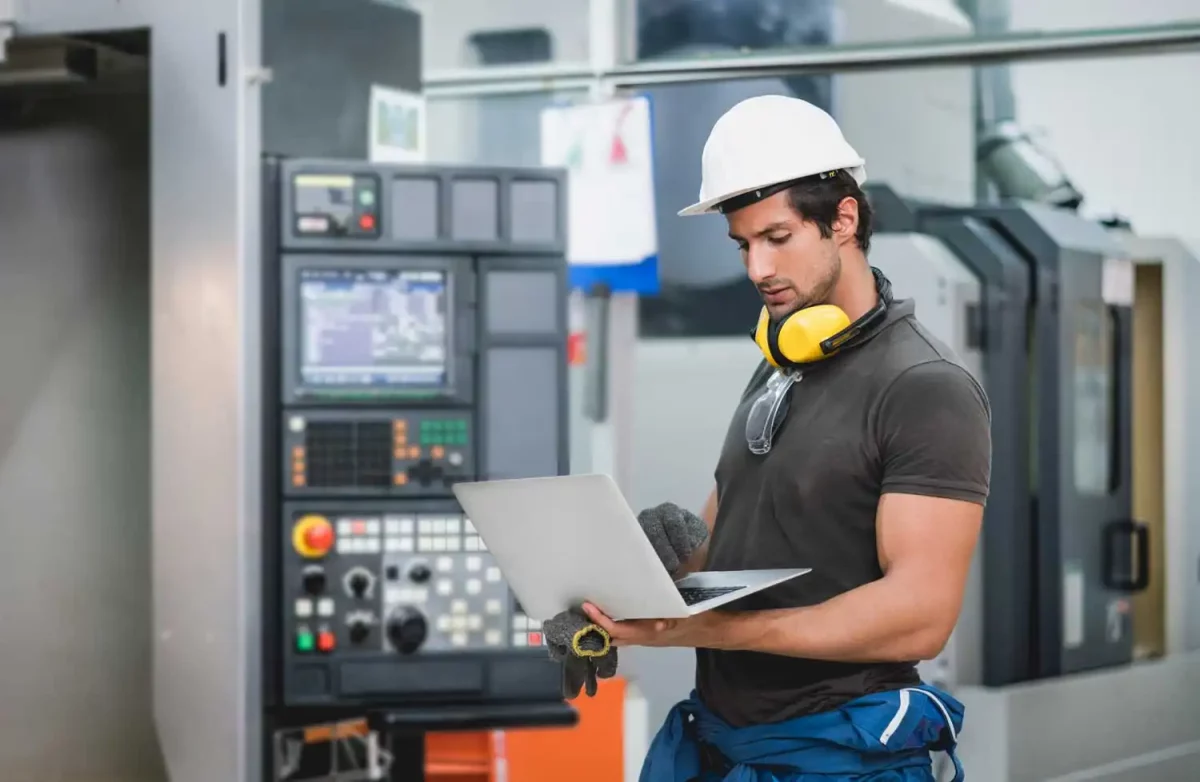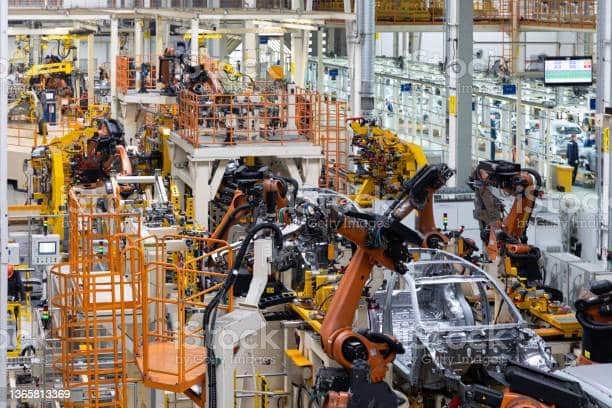Maintenance, repairs, and operations (MRO) is the combination of processes and activities connected to the upkeep of a plant or facility, including the maintenance of the facility, the systems that run inside of it, and the assets and equipment used inside the facility to produce the main business output.
But what does that all mean, and how can you improve your MRO?
Let’s start at the beginning and build our way up from there.
What is MRO?
The easy explanation is that MRO stands for maintenance, repair, and operations. But that’s about the same as saying DNA stands for deoxyribonucleic acid; it’s the right answer, but it doesn’t immediately tell us what we need to know.
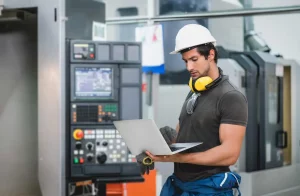
A simple example helps make everything easier to understand. Take an ice cream plant. MRO covers the maintenance on the facility, including the buildings and the areas around them, the systems inside the facility, including things like the electrical and plumbing, and the machines that you use to take the ingredients, make the ice cream, store it, and then load it into trucks.
What is the difference between direct and indirect spend, and what’s the connection to MRO?
Here’s another way to understand MRO. With our ice cream plant example, the company has two types of “spend,” which just means things they spend money on.
On one side is the direct spend, which is money for the parts and materials the company uses to produce ice cream. For example, cream and sugar and walnuts.
On the other side is the indirect spend, which is all the services and products the organization needs to buy. And it can cover a lot. So, when the HR department prints out a new employee handbook, the paper and ink are indirect spends. The cleaning products for the janitor and the earplugs for the equipment operators are also examples of indirect spend. The key point is that the organization needs to spend that money to keep everything going, but you don’t see any of those things in the finished product.
MRO is another example of indirect spend. In fact, it’s often a large percentage of an organization’s overall indirect spend. But it’s not all of it. Remember, indirect spend is both products and services, so the entire accounting department is indirect spend, too, but it’s not maintenance, repair, and operations.
What are the types of MRO?
Although they all fall under the larger umbrella definition of “keeping things up and running,” there are four different types of MRO.
- Infrastructure repair and maintenance
- Production equipment repair and maintenance
- Material handling equipment maintenance
- Tooling and consumables
To better understand the various roles of MRO, let’s look at each type in a bit more detail.
Infrastructure repair and maintenance
This includes maintenance and repair on roofs, doors, windows, parking lots, lighting, and plumbing. It can also include landscaping, snow removal, pest control, and janitorial services.
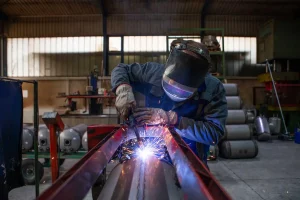
Although internal teams often do all the work, there are many opportunities to bring in third-party vendors. So, you might have the maintenance department doing small repairs on the roof but bring in professional roofers for larger projects. Also, it depends on if the organization owns or leases the property. The maintenance team is off the hook for any work covered in the lease.
Production equipment repair and maintenance
This includes the assets and equipment directly involved in the production process. The goal of this type of MRO is to avoid unscheduled downtime and keep the line online.
Maintenance departments are a big part of these maintenance, repair, and operations processes, and for each asset or piece of equipment, they choose the maintenance strategy that makes the most sense. For example, for something like the lighting around a machine or the fuses inside it, it makes the most sense to simply use the run-to-failure maintenance strategy. But for other machines, the department might choose predictive maintenance, which delivers a lot of value but also requires a large upfront investment on top of ongoing costs.
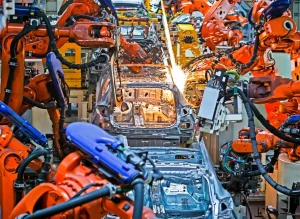
Generally, maintenance departments employ a combination of on-demand work orders and preventive maintenance inspections and tasks.
Material handling equipment maintenance
This covers all the assets and equipment connected to moving raw material to the production line and completed products to the loading docks for eventual shipping. Basically, it’s what you need to bring in the materials and then what you need to send out the product.
Tooling and consumables
This would be all the smaller tools and consumables used during the production process but that are not in the finished product. Drills, drivers, wrenches, socket sets, bits, and cutting blades are all examples. Glue, gloves, goggles, safety glasses, dust masks, and other PPE are all examples of consumables or MRO inventory.
What are the benefits of MRO?
The answer is right inside the definition: MRO is what you need to keep your facilities, their systems, and assets and equipment up and running. It’s that simple. MRO is the foundation that makes production possible. Without it, you can’t do business.
MRO is making sure all the little things work so you don’t have to deal with big problems. The old proverb about the missing nail sums it up. For want of a nail the shoe was lost. For want of a shoe the horse was lost. For want of a horse the rider was lost. And it just keeps going, with the negative effects pulling down progressively larger, more important, and more expensive dominions.
How can I boost MRO efficiency?
When you’re looking to improve your MRO, it makes sense to divide it into parts and then tackle them directly.
Improve MRO procurement
One way to save on MRO costs is to improve your procurement, ensuring you’re getting the MRO inventory and services you need for the best possible prices. Procurement is a whole field itself, but it’s worth looking at some of the important trends to make sure we have a good surface-level understanding of how they work.
Rely on vendor-managed inventory (VMI)
Here, you’re outsourcing the headaches of inventory control to a third party. Instead of deciding what to order, when to order it, and where to put it when you’re holding it in inventory, you turn over all those decisions to the supplier. On top of the obvious benefit of peace of mind, VMI should deliver cost savings from bulk purchases.
Switch to MRO vending machines
For many organizations, cutting MRO inventory costs starts with first cutting instances of “shrinkage,” where inventory is lost through employee theft and misuse. MRO vending machines, and yes, they look a lot like vending machines for drinks and snacks, are a way of controlling inventory. Once the machines are set up, techs can only access inventory using an employee card or fingerprint. If they’re not authorized to use certain parts, the machine won’t dispense them.
But the vending machines do more than slow down or stop shrinkage. They also speed up work. With some vending machines, you can program them to dispense specific combinations of parts and materials, helping techs get everything they need for a work order quickly.
Improve MRO processes and workflows
Here, start by looking at your existing workflows for maintenance. How well are your preventive maintenance tasks planned out? And more importantly, what are your monthly completion rates? For on-demand work orders, how streamlined is the process? For example, if someone notices a problem on the line, how quickly and easily can they contact the maintenance department? From there, how quickly can you review the request, generate, assign, and track a related work order?
For a lot of organizations, even a quick look at their process and workflows reveals a lot of gaps and roadblocks, and it’s because they’re still struggling with older maintenance management methods, like paper and spreadsheets.
What’s the connection between EAM software and MRO?
Modern EAM software makes everything easier by first moving all your data to the cloud, where it’s safe, secure, and searchable. With older maintenance management systems, like paper and spreadsheets, you run the risk of bad data every time you copy over data manually or copy and paste between cells.
From there, the software helps you tackle on-demand work orders more efficiently, schedule and track PMs, and better control your MRO inventory.
Streamline on-demand workflows
Look at your current workflow for on-demand work orders and count all the places where data moves manually or by word of mouth. Those are all the spots where you risk confusion and corruption, slowing your team down, leading to breakdowns.
Modern work order management software keeps everything inside one system, ensuring everyone is looking at the same reliable data.
It starts with the online maintenance request portal, where people can submit requests for work. And because it has customizable data fields, the maintenance department is guaranteed to get the information it needs to make good decisions. From there, you can approve requests and then generate, prioritize, assign, and track work orders. Techs get work orders packed with everything they need to close out quickly, including detailed instructions, checklists, and digital-format manuals.
Enterprise asset management work orders also come with lists of associated parts and materials, ensuring techs arrive onsite with everything they need to get the job done. And when they close out, the software automatically updates your MRO inventory levels, so you always know how much you have in stock of any given item. And when you hit your customizable min level, the inventory management software sends you an alert, so you can set up your next purchase order. With all the vendor contact info inside the software, you can organize and send new orders directly from the CMMS.
Set up, schedule, and track preventive maintenance
Every department has its own key performance indicators (KPIs), and maintenance departments should spend a lot of time thinking about ways to reduce their on-demand work orders, switching instead to preventive maintenance inspections and tasks. The current thinking is to aim for a 20/80 split between reactive and preventive work orders.
EAM software helps you achieve best practices for preventive maintenance by automating the process. Start by setting up your PMs inside the software. For many of them, you can use templates. Once you’ve created your checklists and instructions, copying them over into new PMs takes just a few clicks. From there, you can schedule them based on usage or time, and the preventive maintenance software automatically generates and assigns them for you.
Next step
Taking control of your MRO starts with getting the right EAM solution.
We’re here to help you get the solution that works best for you, including answering your questions about maintenance management software, helping you book a live software demo.
Short, concise summary
MRO stands for maintenance, repair, and operations, and it’s all the assets, equipment, systems, and processes that make production possible. Although they make it possible, MRO does not appear in the final product. A huge part of MRO is the maintenance department. They’re the ones who keep assets and equipment online by looking after infrastructure repair and maintenance, production equipment repair and maintenance, material handling equipment maintenance, and tooling and consumables. To improve your MRO, you can negotiate better deals with suppliers and better control how you distribute MRO inventory. In terms of the processes, a modern CMMS software helps your maintenance team do more, faster and for less money, pushing up uptime and boosting the bottom line.
